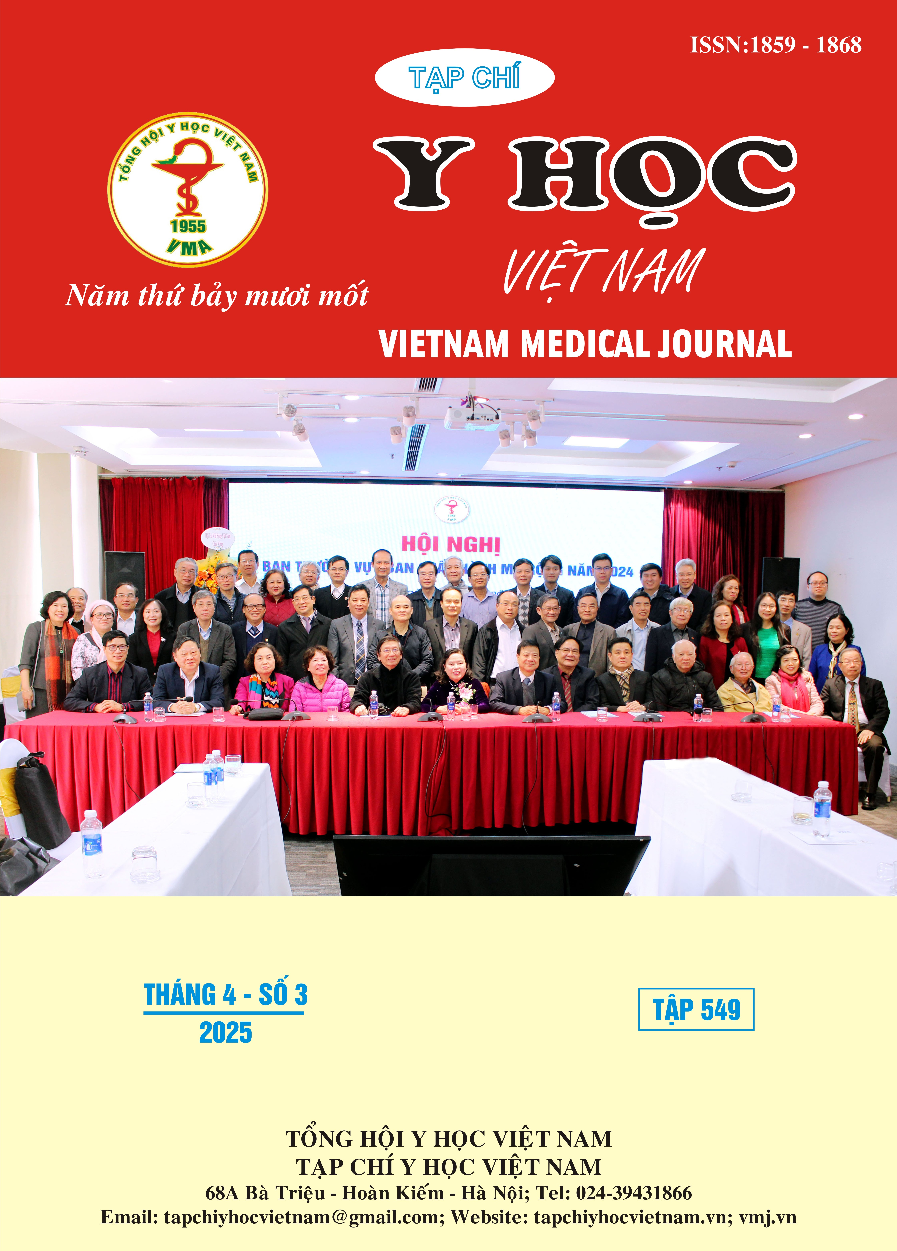CLINICAL AND LABORATORY FEATURES OF MULTIPLE SCLEROSIS WITH OCULAR MANIFESTATIONS
Main Article Content
Abstract
Purpose: To analyze relevant clinical and laboratory features in the diagnosis of multiple sclerosis with ocular manifestations. Methods: A retrospective descriptive and analytical study included 36 patients with multiple sclerosis confirmed diagnosis according to the 2010 McDonald criteria and 36 patients with a diagnosis of optic neuritis due to other causes having complete medical history, clinical symptoms, magnetic resonance imaging, laboratory tests, cerebrospinal fluid tests, clinical symptoms after 5 days of acute exacerbation treatment with Solumedrol 1000mg/day. Results: Average age of onset 31.75 ± 12.2, ≤ 40 years old accounts for 75%. Younger people (≤ 40 years old) are more likely to have visual onset symptoms, while older people (> 40 years old) ưere more likely to have motor and sensory symptoms. The average number of relapses was 3.8 with 50% of eyes having finger-count vision < 3m after 5 relapses, 50% of patients lost their working capacity after 4 relapses. The rate of lesion locations on MRI appearing in time and space to help diagnose multiple sclerosis is in the order of brain 86.1%, optic nerve 80.6% and spinal cord 72.2%. The relapsing type was the most common compared with the other types (88.9%). Before a patient with optic neuritis has all three features including optic nerve hyperintensity on T2-weighted images, female gender and age ≤ 40 years, the likelihood of multiple sclerosis was 15 times higher than in patients without these factors (OR = 15; 95% CI 2.5-92.1; p = 0.004). Conclusion: Patients with optic neuritis who present with optic nerve hyperintensity nerve on MRI, age ≤ 40 years and women should have a mandatory cranial MRI 3 months later to confirm the diagnosis. Early treatment of multiple sclerosis with immunosuppressive drugs to prevent complications of blindness and early loss of work capacity in young people.
Article Details
Keywords
optic neuritis, multiple sclerosis, magnetic resonance imaging
References
2. Edwards S., Zvartau M., Clarke H., et al. (1998). "Clinical relapses and disease activity on magnetic resonance imaging associated with viral upper respiratory tract infections in multiple sclerosis". J Neurol Neurosurg Psychiatry, 64 (6), pp. 736-41.
3. World Health Organization (2008), Atlas multiple sclerosis resources in the world 2008. World Health Organization. Multiple sclerosis international federation, WHO library Cataloguing in publication Data, pp. 1-50.
4. Atkins E. J., Drews-Botsch C. D., Newman N. J., et al. (2008). "Management of optic neuritis in Canada: survey of ophthalmologists and neurologists". Can J Neurol Sci, 35 (2), pp. 179-84.
5. Kale N. (2016). "Optic neuritis as an early sign of multiple sclerosis". Eye and Brain, 8, pp. 195-202.
6. Kim S. H., Huh S. Y., Kim W., et al. (2013), "Clinical characteristics and outcome of multiple sclerosis in Korea: does multiple sclerosis in Korea really differ from that in the Caucasian populations?", Mult Scler, 19 (11), pp. 1493-8.
7. Tan Chong-Tin (1988), "Multiple sclerosis in Malaysia", Archives of Neurology, 45(6), pp.624-627.
8. Siritho S., Prayoonwiwat N. (2007), "A retrospective study of multiple sclerosis in Siriraj Hospital, Bankok, Thailand", Can J Neurol Sci, 34 (1), pp. 99-104.
9. Nguyễn Văn Tuận (2011), "Nghiên cứu một số đặc điểm lâm sàng và cận lâm sàng bệnh xơ cứng rải rác tại Bệnh viện Bạch Mai", Luận án Tiến sĩ Y học, Viện nghiên cứu khoa học Y dược lâm sàng 108.
10. Mohamed Hussein Hussein, Farouk Aggag Mohamed, Osman Mohamed Wael, et al. (2019), "Demographic, clinical and paraclinical characteristics of a sample of egyptian multiple sclerosis (ms) patients attending ms clinic in Al-azhar University Hospitals", Al-Azhar Medical Journal, 48 (4), pp. 387-396.


